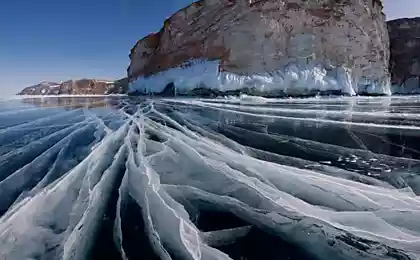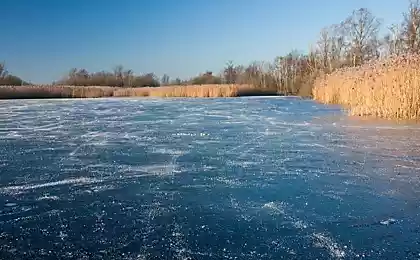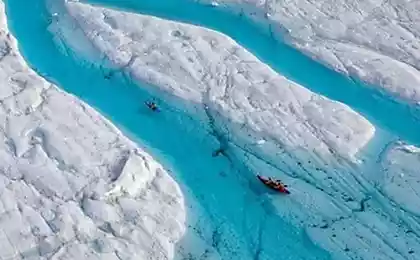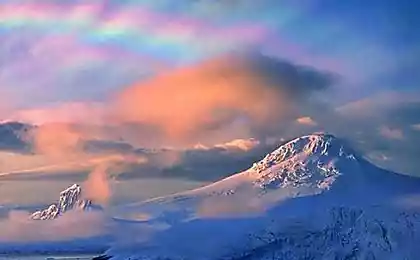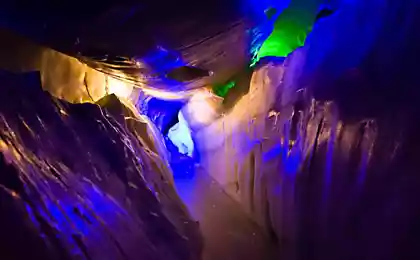1567
Mysterious Antarctica
Antarctica - the most severe climatic regions of the Earth. The lowest recorded temperature is -89.2 ° C.
Now the northern hemisphere is in anticipation of the winter, and in the coming Antarctic summer, and a team of researchers from around the world sent here by using the (relatively) warm season. Among them are Russian scientists penetrated in February 2012 at the relict subglacial Lake Vostok, which is millions of years has been isolated from the outside world. This unique body of water is at a depth of 3700 meters below the surface of the glacier, and this summer the Arctic deep into the lake is planned to send a robot to collect water samples and sediments from the bottom.
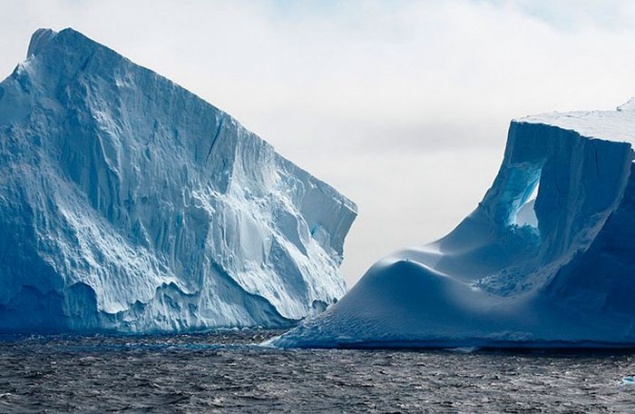
In this feature, includes photographs of the mysterious world of Antarctica, since visited this icy continent is called the Antarctic adventure trip of a lifetime.
Polar stratospheric clouds or nacreous clouds in Antarctica, on January 11, 2011. Located at an altitude of 25 kilometers, they are the highest of all types of clouds. Found only in the polar regions, where the temperature in the stratosphere falls below 73 ° C. Learn about other unusual cloud formations can be in the article "Rare species of clouds».
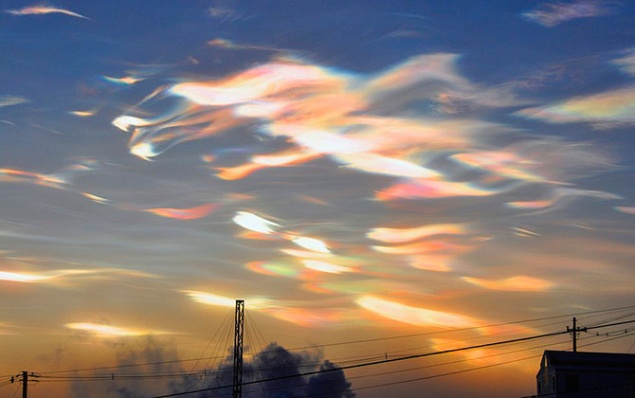
Laboratory IceCube. This neutrino detector with the world's largest telescope, located in the ice of Antarctica, a mysterious world. Scientists are trying to unravel the mysteries of tiny particles - neutrinos, hoping to shed light on how the universe began.
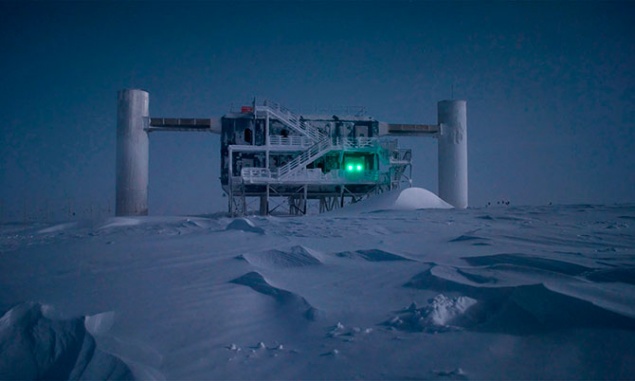
Canal Jean Charles Peltier - French physicist (1785 - 1845). 17 May 2012.
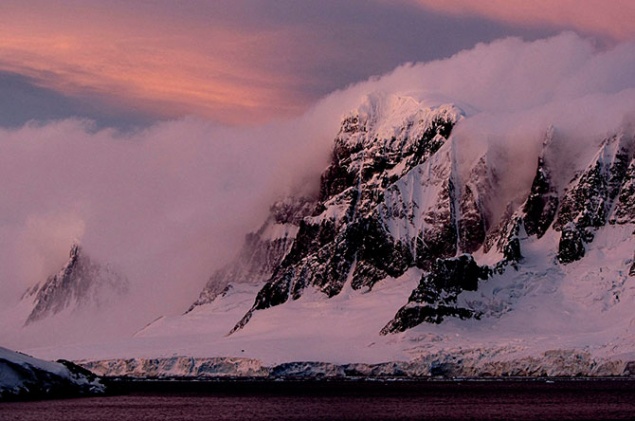
South Polar Telescope (SPT). The official purpose of the American unit is studying the microwave background radiation and the universe, as well as the detection of dark matter. 11 January 2012.
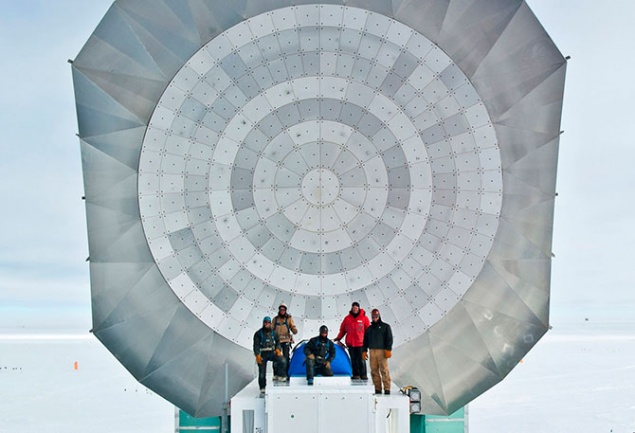
This is also the southern polar telescope, only at night. It weighs 254 tons, height - 22.8 meters, length - 10 meters:
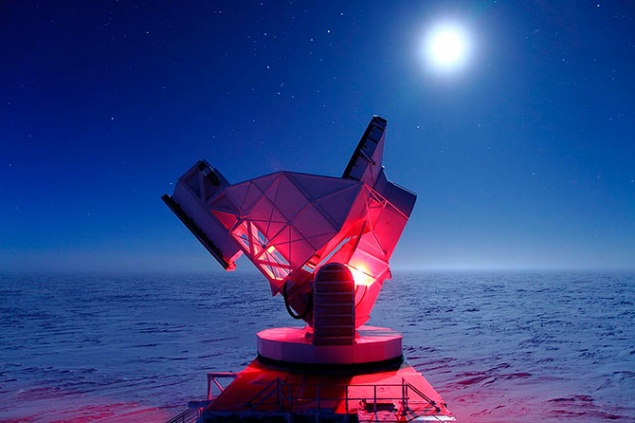
It sounds dirty snow. This is actually a colony of penguins at Cape Washington. The photo was taken from a great height 2 November 2011.
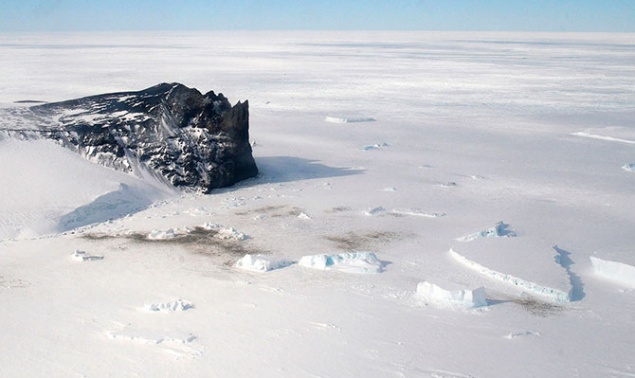
Emperor penguins - the largest modern species of penguin. They can dive to a depth of over 500 meters and stay under water for up to 15 minutes.
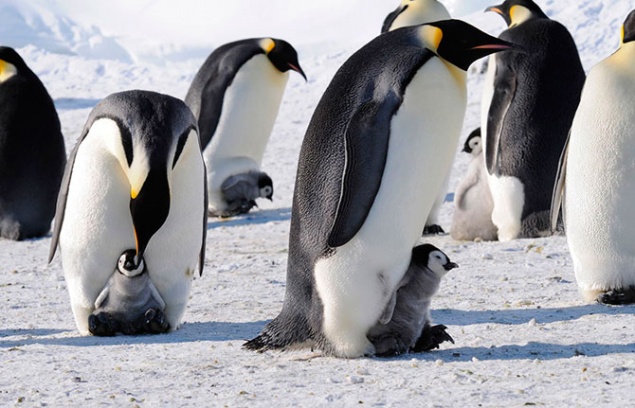
Full Moon Island Delak, named in honor of the biologist who worked in his field in the early 1970s.
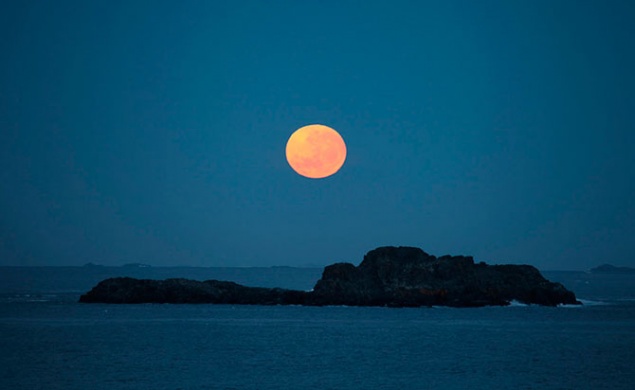
Northern Lights at McMurdo Station on July 15, 2012. The Antarctic station McMurdo - the largest settlement, port, transport hub and a research center in Antarctica. Constantly there live about 1200 people. Located next to the Ross Ice Shelf.
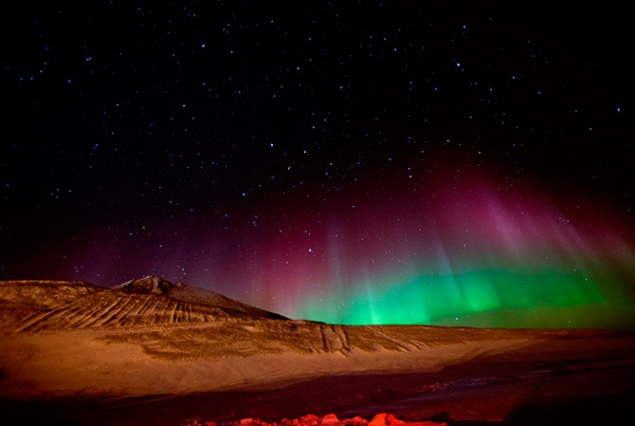
The buildings at the South Pole and almost full moon, May 9, 2012. Outside, the red lights are used to minimize "light pollution" Interfering with different telescopes.
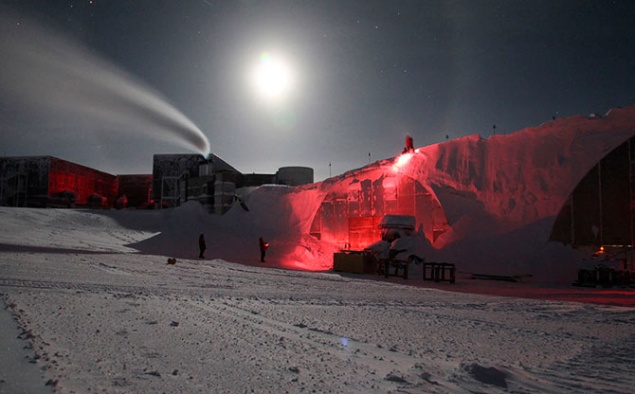
Moon and aurora australis over the laboratory IceCube, which we have already spoken. Antarctic station Amundsen-Scott August 24, 2012.
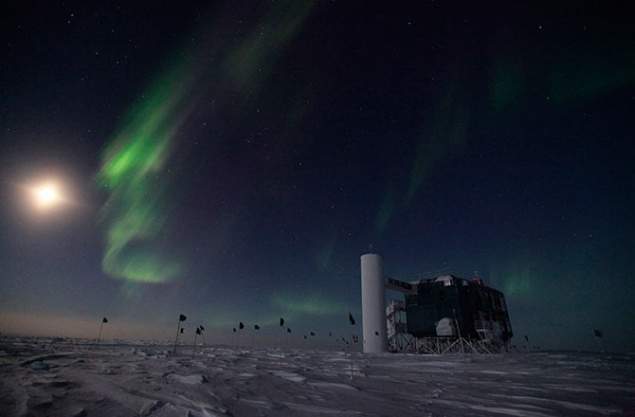
Under the ground! Digital optical module is lowered into the interior of the ice. It is part of the lab IceCube - neutrino detector.
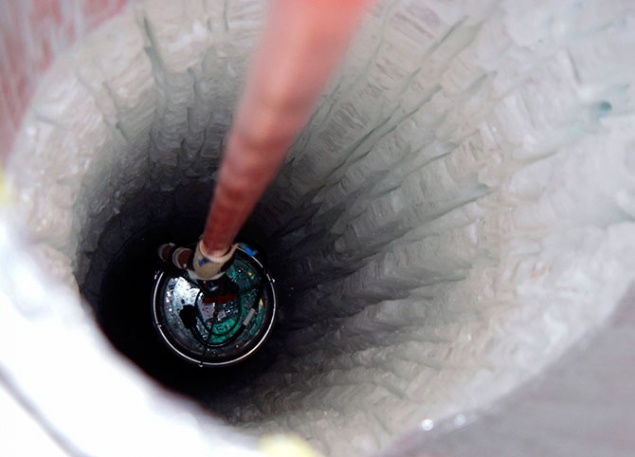
The majestic beauty of the Arctic peninsula - the northernmost part of the continent of Antarctica length of about 1300 km.
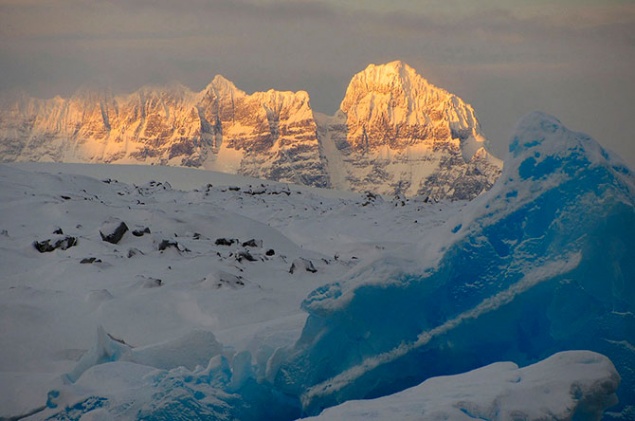
Hi! Marine leopard hunting on Ross Island in the Ross Sea, November 22, 2011. This is the southernmost island of the planet earth (excluding Antarctica mainland).
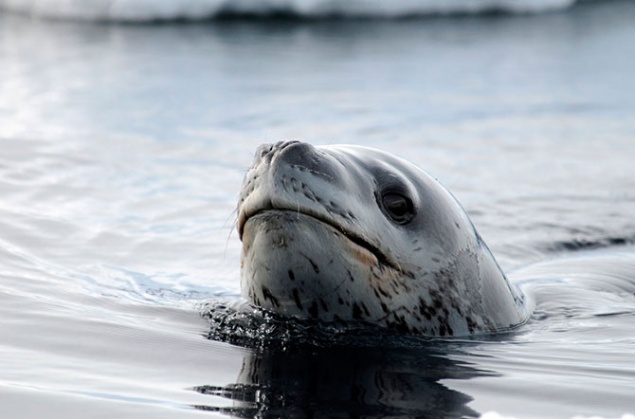
Antarctic station McMurdo, November 2011.
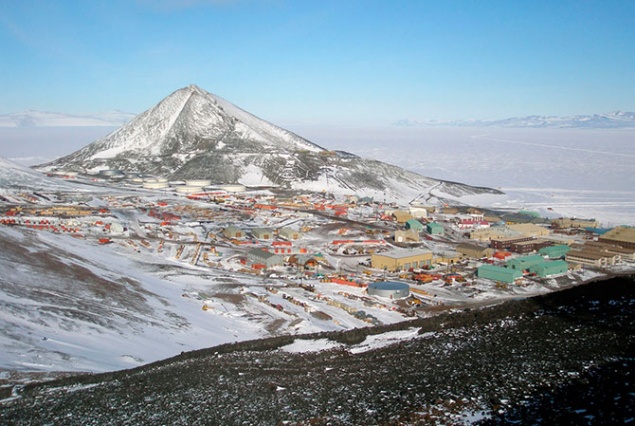
Portrait. Member of the US Antarctic program near McMurdo Station, 1 November 2012.
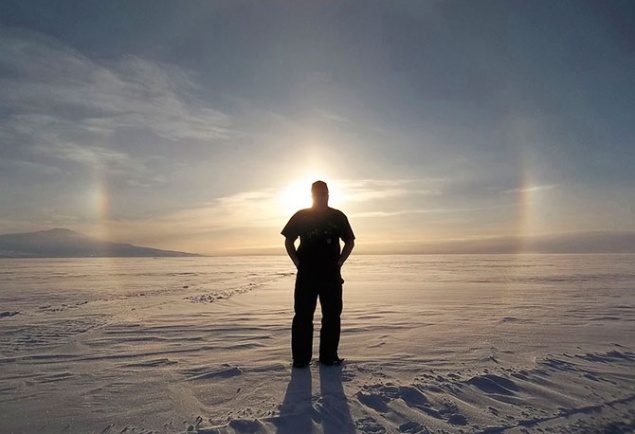
Plates satellite communications at the Antarctic station Amundsen-Scott (American program), August 23, 2012. The station is located at an altitude of 2835 meters above sea level, on the glacier, which reaches a maximum thickness of 2850 meters. The average annual temperature - about £ 49 Celsius; changes from? 28 C in December to 60 ° C in July.
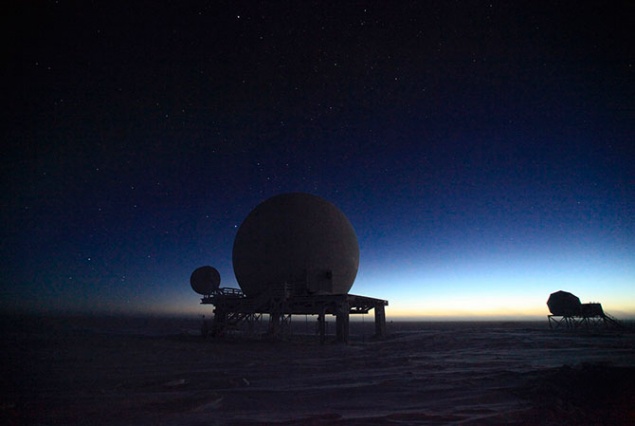
Tests of the prototype Mars spacesuit. Created by NASA from more than 350 different materials, costs about $ 100 000. Antarctica on March 13, 2011.
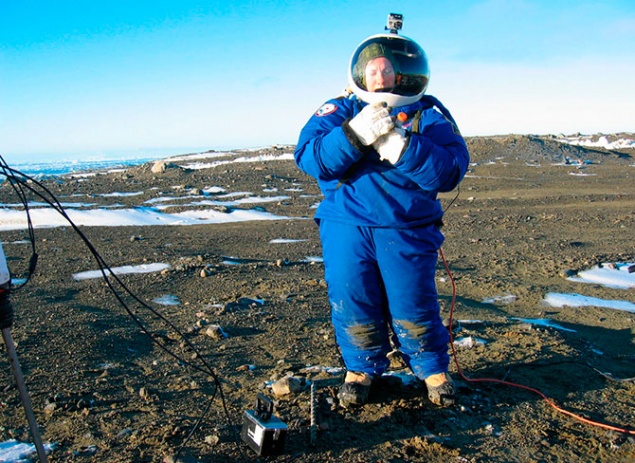
Iceberg near the Antarctic Peninsula, October 24, 2011.
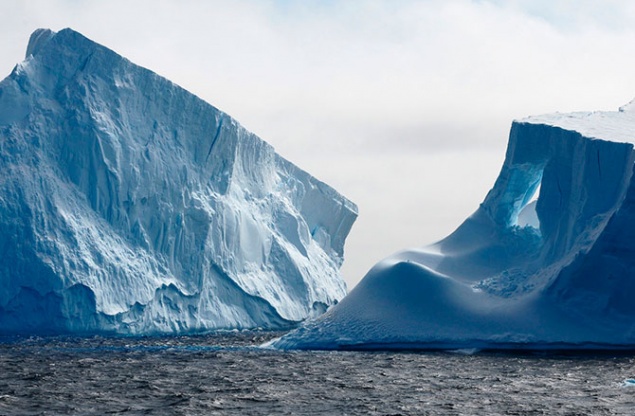
Spring sunset on the Arctic Palmer Station, 31 March 2011.
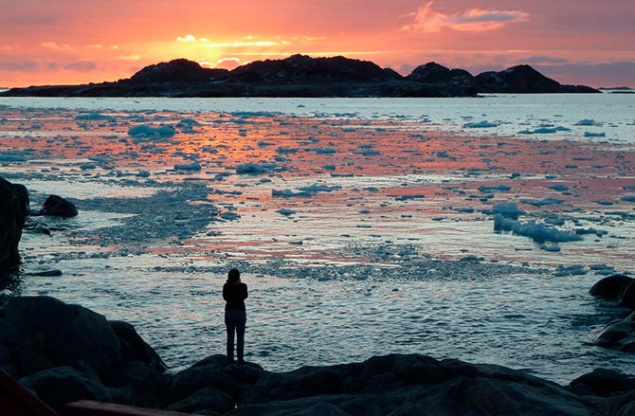
Interesting snow formation, similar to the following. Usually appear after the storm in Antarctica.
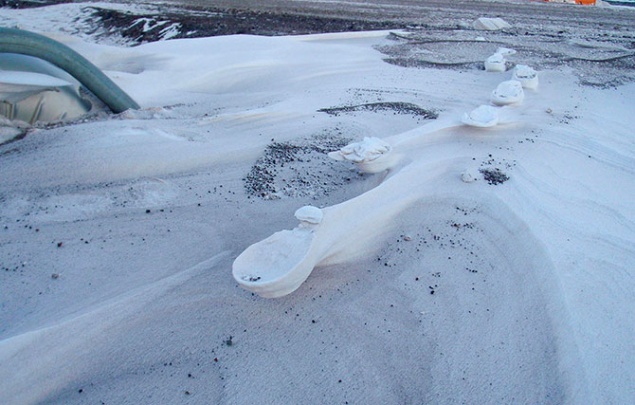
Russian Antarctic station "Vostok", located in the central part of the Antarctic. Photo 2005.
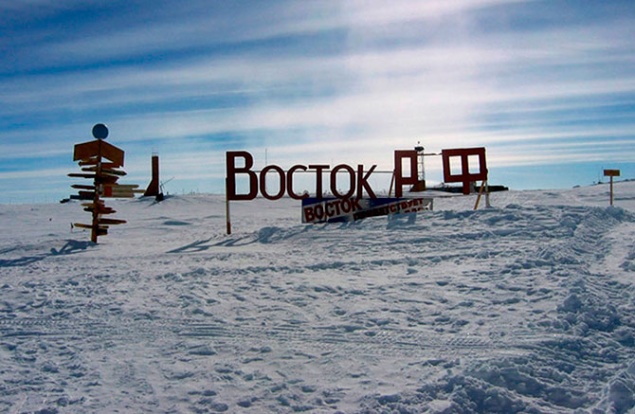
Aerial view of the Russian Antarctic station "Vostok". Our scientists in early 2012, made a major breakthrough in the study of Antarctica. Now we will tell about it.
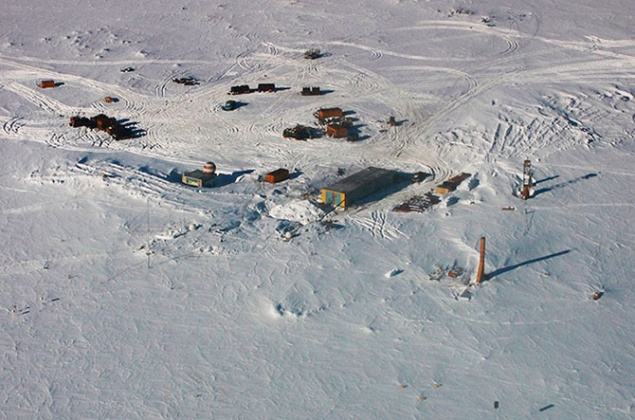
February 5, 2012 Russian scientists managed to penetrate the relict subglacial Lake Vostok in Antarctica, which is 14 million years old has been isolated from the outside world.
Lake Vostok in Antarctica hidden under 4 kilometers of ice thickness. To reach the water, the scientists had to drill a well depth meters 3766! The study of Lake Vostok plays a huge role in the study of climate change over the past millennium. As scientists believe, in the waters of the lake can inhabit living organisms, although there is a water pressure of 300 atmospheres.
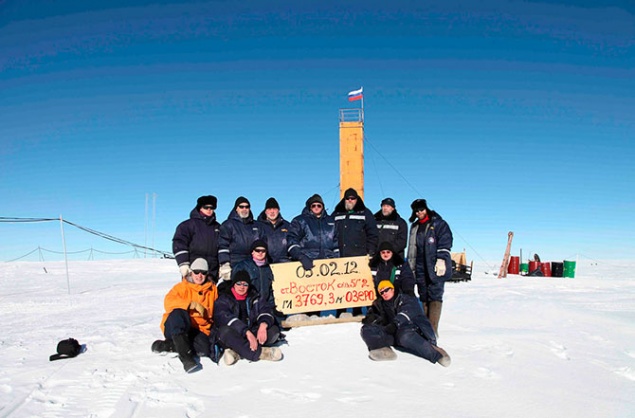
American flag. Antarctica, 30 December 2011.
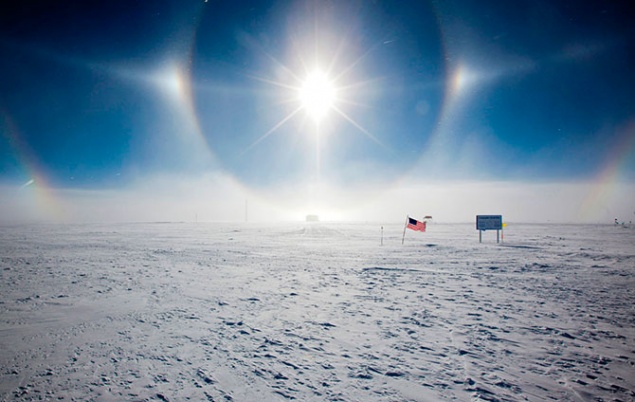
The vast expanses of Antarctica. Except tracked machines then often you will pass on November 27, 2011.
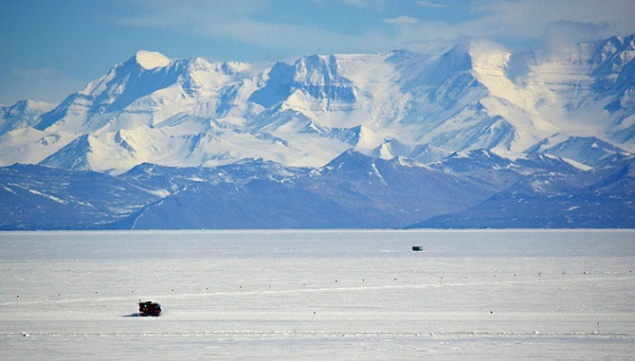
Huge iceberg near the Antarctic Peninsula, 24 October 2011.
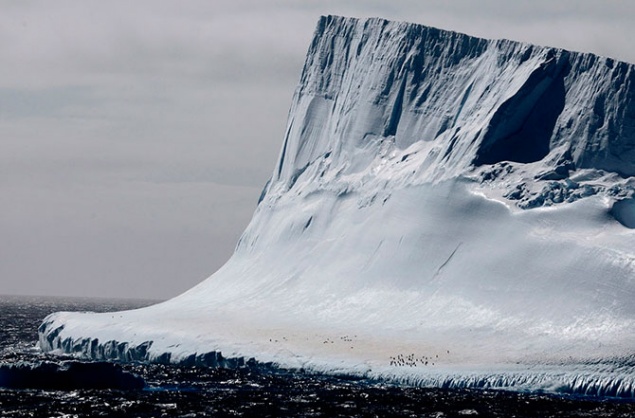
Icy deck of the American research vessel Nathaniel B Palmer, 11 October 2011.
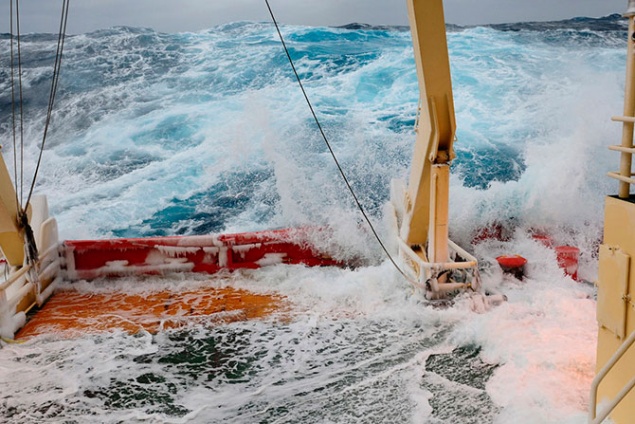
View of the icy deck of a research vessel Nathaniel B Palmer on the other hand, 3 October 2011.
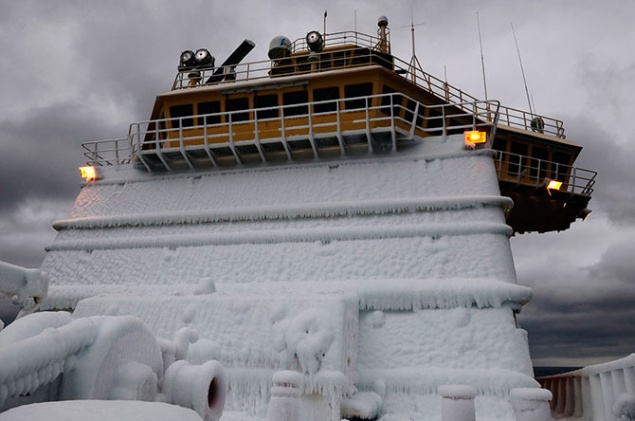
Flags of countries that have signed the Antarctic Treaty. This document envisages demilitarization of Antarctica, using it exclusively for peaceful purposes and the transformation into a zone free of nuclear weapons. The agreement was signed December 1, 1959 in Washington, DC, and in January 2010 the number of participants in the agreement included 46 states. Our flag was not included in the frame.
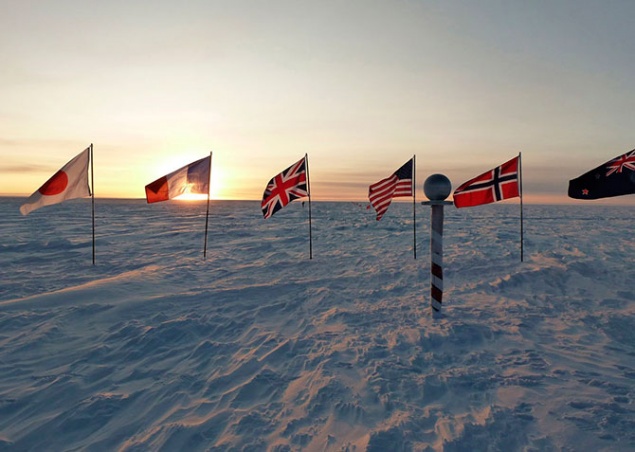
Fires occur in Antarctica. Since February 25, 2012 Brazil lost its single research station "Comandante Ferraz" Antarctic on King George Island. The fire broke out suddenly because of an explosion in the engine room.
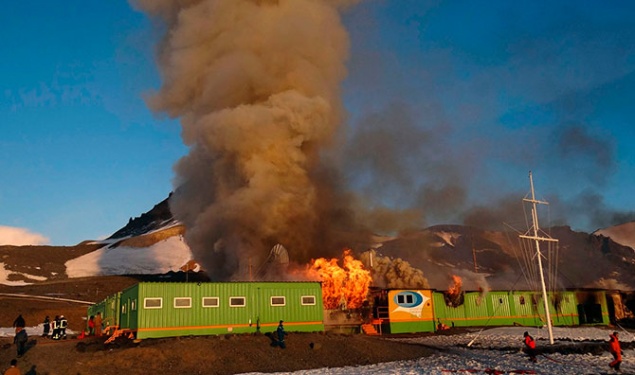
Pup with his mother, 30 November 2011.
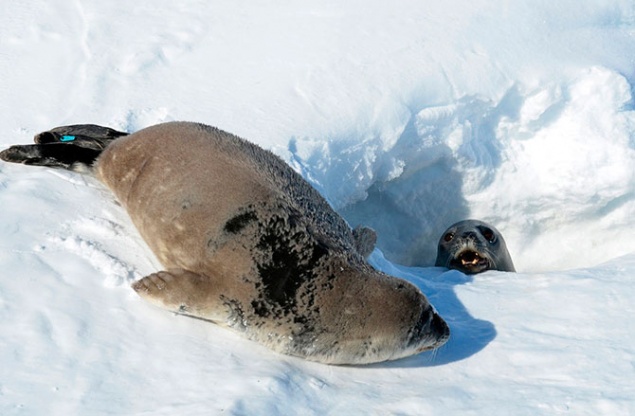
Norwegian Lutheran Church on the island of South Georgia, September 27, 2011.
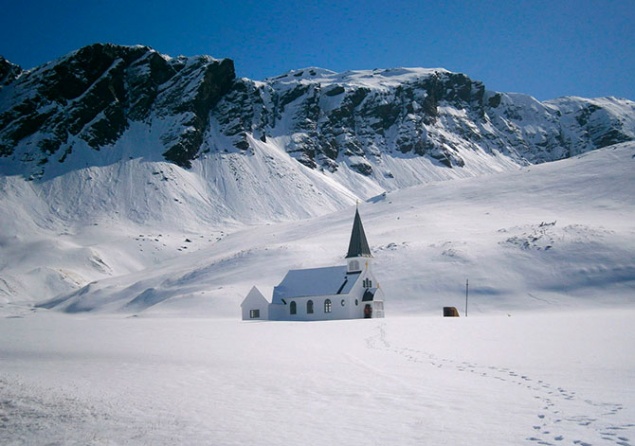
Our Milky Way Galaxy and southern polar lights. Ross Island, Antarctica on July 15, 2012.
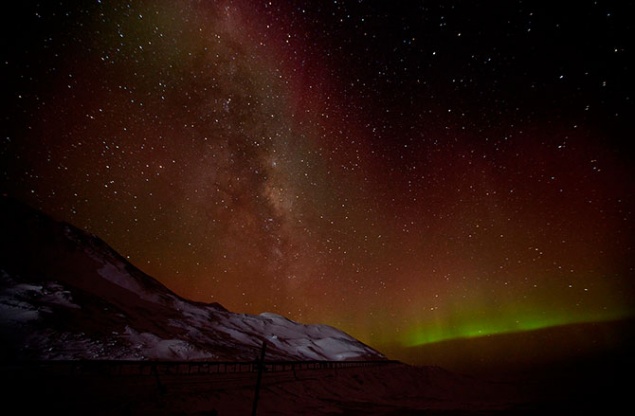
It was a short journey into the mysterious world of Antarctica.
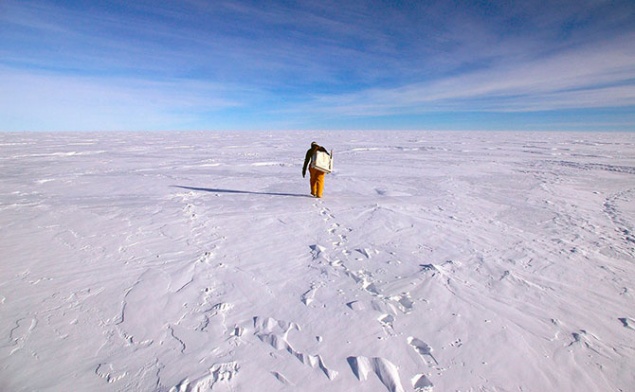
Source: tinepoverish.livejournal.com
Now the northern hemisphere is in anticipation of the winter, and in the coming Antarctic summer, and a team of researchers from around the world sent here by using the (relatively) warm season. Among them are Russian scientists penetrated in February 2012 at the relict subglacial Lake Vostok, which is millions of years has been isolated from the outside world. This unique body of water is at a depth of 3700 meters below the surface of the glacier, and this summer the Arctic deep into the lake is planned to send a robot to collect water samples and sediments from the bottom.

In this feature, includes photographs of the mysterious world of Antarctica, since visited this icy continent is called the Antarctic adventure trip of a lifetime.
Polar stratospheric clouds or nacreous clouds in Antarctica, on January 11, 2011. Located at an altitude of 25 kilometers, they are the highest of all types of clouds. Found only in the polar regions, where the temperature in the stratosphere falls below 73 ° C. Learn about other unusual cloud formations can be in the article "Rare species of clouds».

Laboratory IceCube. This neutrino detector with the world's largest telescope, located in the ice of Antarctica, a mysterious world. Scientists are trying to unravel the mysteries of tiny particles - neutrinos, hoping to shed light on how the universe began.

Canal Jean Charles Peltier - French physicist (1785 - 1845). 17 May 2012.

South Polar Telescope (SPT). The official purpose of the American unit is studying the microwave background radiation and the universe, as well as the detection of dark matter. 11 January 2012.

This is also the southern polar telescope, only at night. It weighs 254 tons, height - 22.8 meters, length - 10 meters:

It sounds dirty snow. This is actually a colony of penguins at Cape Washington. The photo was taken from a great height 2 November 2011.

Emperor penguins - the largest modern species of penguin. They can dive to a depth of over 500 meters and stay under water for up to 15 minutes.

Full Moon Island Delak, named in honor of the biologist who worked in his field in the early 1970s.

Northern Lights at McMurdo Station on July 15, 2012. The Antarctic station McMurdo - the largest settlement, port, transport hub and a research center in Antarctica. Constantly there live about 1200 people. Located next to the Ross Ice Shelf.

The buildings at the South Pole and almost full moon, May 9, 2012. Outside, the red lights are used to minimize "light pollution" Interfering with different telescopes.

Moon and aurora australis over the laboratory IceCube, which we have already spoken. Antarctic station Amundsen-Scott August 24, 2012.

Under the ground! Digital optical module is lowered into the interior of the ice. It is part of the lab IceCube - neutrino detector.

The majestic beauty of the Arctic peninsula - the northernmost part of the continent of Antarctica length of about 1300 km.

Hi! Marine leopard hunting on Ross Island in the Ross Sea, November 22, 2011. This is the southernmost island of the planet earth (excluding Antarctica mainland).

Antarctic station McMurdo, November 2011.

Portrait. Member of the US Antarctic program near McMurdo Station, 1 November 2012.

Plates satellite communications at the Antarctic station Amundsen-Scott (American program), August 23, 2012. The station is located at an altitude of 2835 meters above sea level, on the glacier, which reaches a maximum thickness of 2850 meters. The average annual temperature - about £ 49 Celsius; changes from? 28 C in December to 60 ° C in July.

Tests of the prototype Mars spacesuit. Created by NASA from more than 350 different materials, costs about $ 100 000. Antarctica on March 13, 2011.

Iceberg near the Antarctic Peninsula, October 24, 2011.

Spring sunset on the Arctic Palmer Station, 31 March 2011.

Interesting snow formation, similar to the following. Usually appear after the storm in Antarctica.

Russian Antarctic station "Vostok", located in the central part of the Antarctic. Photo 2005.

Aerial view of the Russian Antarctic station "Vostok". Our scientists in early 2012, made a major breakthrough in the study of Antarctica. Now we will tell about it.

February 5, 2012 Russian scientists managed to penetrate the relict subglacial Lake Vostok in Antarctica, which is 14 million years old has been isolated from the outside world.
Lake Vostok in Antarctica hidden under 4 kilometers of ice thickness. To reach the water, the scientists had to drill a well depth meters 3766! The study of Lake Vostok plays a huge role in the study of climate change over the past millennium. As scientists believe, in the waters of the lake can inhabit living organisms, although there is a water pressure of 300 atmospheres.

American flag. Antarctica, 30 December 2011.

The vast expanses of Antarctica. Except tracked machines then often you will pass on November 27, 2011.

Huge iceberg near the Antarctic Peninsula, 24 October 2011.

Icy deck of the American research vessel Nathaniel B Palmer, 11 October 2011.

View of the icy deck of a research vessel Nathaniel B Palmer on the other hand, 3 October 2011.

Flags of countries that have signed the Antarctic Treaty. This document envisages demilitarization of Antarctica, using it exclusively for peaceful purposes and the transformation into a zone free of nuclear weapons. The agreement was signed December 1, 1959 in Washington, DC, and in January 2010 the number of participants in the agreement included 46 states. Our flag was not included in the frame.

Fires occur in Antarctica. Since February 25, 2012 Brazil lost its single research station "Comandante Ferraz" Antarctic on King George Island. The fire broke out suddenly because of an explosion in the engine room.

Pup with his mother, 30 November 2011.

Norwegian Lutheran Church on the island of South Georgia, September 27, 2011.

Our Milky Way Galaxy and southern polar lights. Ross Island, Antarctica on July 15, 2012.

It was a short journey into the mysterious world of Antarctica.

Source: tinepoverish.livejournal.com



